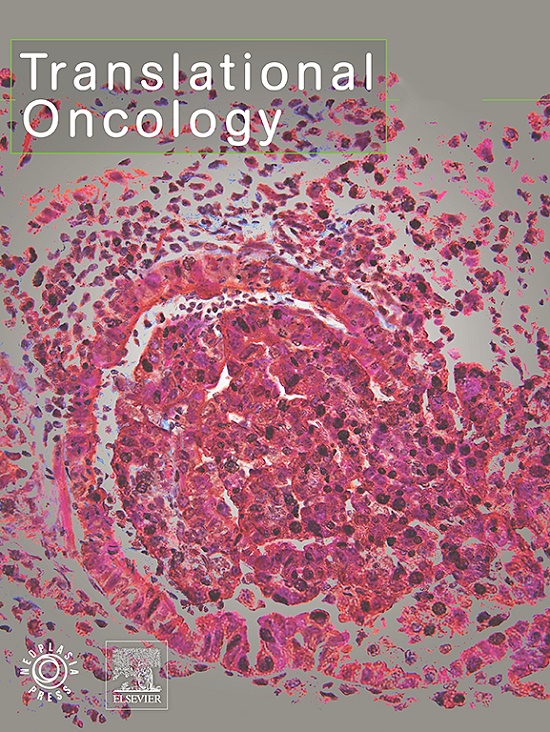表观遗传学见解:揭示低甲基化CACNA2D3和FLNA基因在乳腺癌进展中的影响
IF 5
2区 医学
Q2 Medicine
引用次数: 0
摘要
乳腺癌(BC)仍然是女性癌症相关死亡率的重要原因,在其发展过程中受到复杂的遗传和表观遗传改变的影响。在这些过程中,DNA低甲基化促进了癌症的生长。本研究旨在检测乳腺癌患者中CACNA2D3和FLNA基因的表达水平和甲基化状态,并评估mRNA表达与这些基因的临床病理特征及生存率的关系。两种先进的技术,全基因组亚硫酸盐测序(WGBS)和差异表达的WGBS (DEGs),用于评估表达和甲基化水平。为了分析乳腺癌中改变的途径,使用WebGestalt过代表性分析工具(ORA)对BC样本中高表达的低甲基化基因进行基因本体(GO)分析。此外,使用乳腺癌国际联盟分子分类学(METABRIC)队列、癌症基因组图谱(TCGA)和Kaplan-Meier Plotter数据集来检验CACNA2D3和FLNA基因的预测意义。然后,应用5-AZA -2 ' -脱氧胞苷(5-AZA)处理来检测MCF7和MCF10A细胞DNA甲基化与基因表达的关系。这些先进技术的结果表明,CACNA2D3和FLNA在乳腺癌患者和对照组之间的基因表达和甲基化水平存在显著差异。来自BC数据集多个公共域的数据分析显示,MAPK通路是BC中最显著的通路(p值为0.035),有四个重叠的异常低甲基化基因(ANGPT1, CACNA2D3, FLNA和IKBKG)。此外,CACNA2D3基因与肿瘤大小、组织学分级、雌激素受体(ER)和孕激素受体(PR)状态有关。此外,在两种细胞系中,5-AZA处理后的CACNA2D3基因表达增加,而FLNA基因表达出现波动,提示有其他因素调节FLNA的表达,可能与肿瘤大小、组织学、ER和PR有关。综上所述,DNA甲基化可能是CACNA2D3的调控因素,其高表达与乳腺癌患者的临床病理特征有关,尤其是预后良好。本文章由计算机程序翻译,如有差异,请以英文原文为准。
Epigenetic insights: unveiling the impact of hypomethylated CACNA2D3 and FLNA genes in breast cancer progression
Breast Cancer (BC) remains a significant cause of cancer-related mortality in women, impacted by complex genetic and epigenetic alterations in its progression. Among these processes is DNA hypomethylation, which promotes cancer growth. This study aimed to detect the expression level and methylation status of CACNA2D3 and FLNA genes in breast cancer patients and then assess the relationship between the mRNA expression and clinicopathological characteristics, as well as the survival rate of these genes. Two advanced techniques, whole genome bisulfite sequencing (WGBS) and differentially expressed WGBS (DEGs), were used to assess the expression and methylation levels. To analyze the pathways that were altered in breast cancer, the WebGestalt over-representation analysis tool (ORA) was used to perform gene ontology (GO) for the highly expressed hypomethylated genes in BC samples. Moreover, the Molecular Taxonomy of Breast Cancer International Consortium (METABRIC) cohort, The Cancer Genome Atlas (TCGA), and Kaplan-Meier Plotter datasets were used to examine the predictive significance of the CACNA2D3 and FLNA genes. Then, 5-aza-2′-deoxycytidine (5-AZA) treatment was applied to examine the relationship between DNA methylation and gene expression in MCF7 and MCF10A cells. The results of these advanced techniques indicated that CACNA2D3 and FLNA exhibited a significant difference in gene expression and methylation levels between breast cancer patients and controls. The data analysis from several public domains of BC datasets showed that the MAPK pathway was the most significant pathway in BC (p-value 0.035) with four overlapping aberrant hypomethylated genes (ANGPT1, CACNA2D3, FLNA, and IKBKG). Moreover, the CACNA2D3 gene was associated with tumor size, histological grade, estrogen receptor (ER), and progesterone receptor (PR) status. Furthermore, CACNA2D3 gene expression was increased after 5-AZA treatment in two cell lines, while FLNA gene showed fluctuations in its expression, suggesting that additional factors regulate FLNA expression, which could be related to tumor size, histology, ER, and PR. In conclusion, DNA methylation could be a regulatory factor for CACNA2D3 and its high expression was linked to clinicopathological characteristics of breast cancer patients, especially with a good prognosis.
求助全文
通过发布文献求助,成功后即可免费获取论文全文。
去求助
来源期刊

Translational Oncology
ONCOLOGY-
CiteScore
8.40
自引率
2.00%
发文量
314
审稿时长
54 days
期刊介绍:
Translational Oncology publishes the results of novel research investigations which bridge the laboratory and clinical settings including risk assessment, cellular and molecular characterization, prevention, detection, diagnosis and treatment of human cancers with the overall goal of improving the clinical care of oncology patients. Translational Oncology will publish laboratory studies of novel therapeutic interventions as well as clinical trials which evaluate new treatment paradigms for cancer. Peer reviewed manuscript types include Original Reports, Reviews and Editorials.
 求助内容:
求助内容: 应助结果提醒方式:
应助结果提醒方式:


